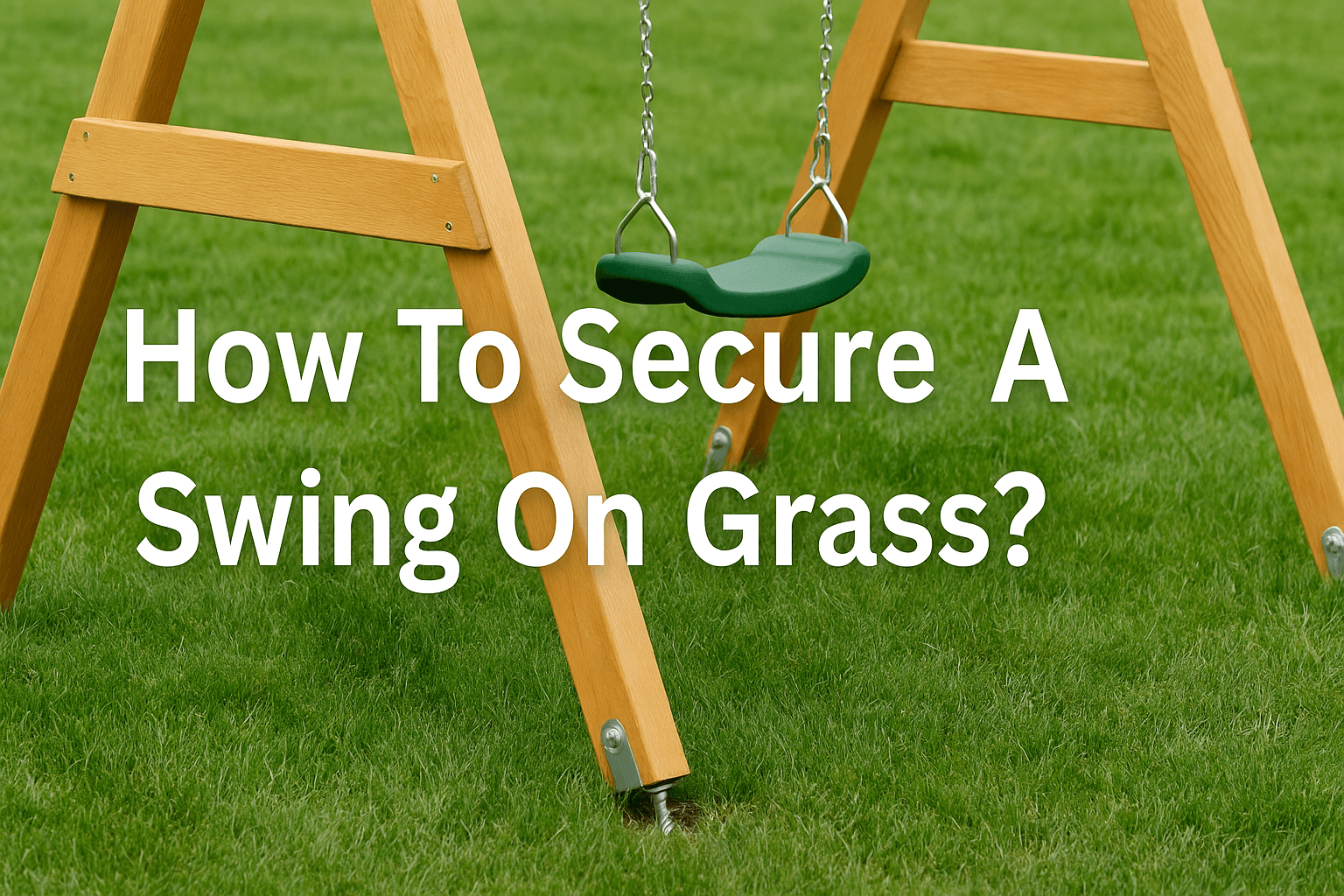
How To Secure A Swing On Grass?
Swings and play frames on grass? Brilliant—until they tip mid-swing! 😬 The short answer: secure them with ground anchors or concrete footings. It’s easier than you think. Keep reading for simple steps, common mistakes, and smart tips to keep the fun going (without the faceplants).
Why Swings Need Securing
Preventing Tipping and Movement During Play
Ever watched a swing start to wobble mid-flight? It's enough to make any parent flinch. A swing set that isn’t secured properly can tip, slide, or worse—topple over entirely.
Kids don’t swing gently. They run, leap, and launch themselves with full energy. Securing your swing is the only way to keep up with their play.
Enhancing Safety for Children
Play should be carefree—not a trip to A&E waiting to happen. A well-anchored swing means fewer accidents and more peace of mind. You’ll feel better knowing it’s safe, and your kids can just enjoy the ride.

Factors Affecting Stability
Swing Set Design (A-frame, single beam)
The frame makes a big difference. A-frame sets are naturally more stable—think of them like a tent. Single-beam swings can be stylish, but they often need extra support. Especially when kids start getting adventurous.
Soil Type and Ground Conditions
Grass is lovely, but not all soil is equal. Clay holds tight. Sand, on the other hand, shifts and sinks. If your lawn gets soggy or dry, it’ll affect how well your anchors hold.
User Weight and Activity
A toddler’s gentle sway is very different from two 10-year-olds going full Tarzan. Heavier use calls for sturdier anchoring. Always match your swing setup to who’s using it—and how wildly they play.

Effective Methods for Securing Swings on Grass
Using Ground Anchors
Screw-in Auger Anchors (heavy-duty, easy installation)
These are your go-to for quick and strong anchoring. Just twist them into the ground, usually at an angle, and you’re sorted. They grip well, even in loose soil, and won’t damage your lawn like concrete might.
It’s the same principle as a tent peg—just stronger and built for wild swing sessions.
Concrete Spikes or Stakes
If you want long-term, this is it. Dig a hole, plant your stake, and pour in concrete. It takes more effort, but once it’s in, it’s rock solid. Great for busy gardens or heavier frames.
J-Hook or U-Bolt Anchors
These clamp onto the swing legs and dig into the ground. They’re ideal for medium-duty swings and can handle regular use. Just make sure you check the bolts often—they can loosen over time.
Alternative and Supplemental Methods
Burying Legs in Concrete (for permanent installation)
Planning to keep the swing there for good? Then bury the legs. Dig holes for each leg, pour in concrete, and set the frame while it’s still wet. Once it dries, that swing isn’t going anywhere.
Adding Sandbags or Weights to Base Legs
Need something temporary? Weighted bags can help. They’re easy to move, cost-effective, and don’t damage the grass. Not perfect for heavy swinging, but fine for light play or when you’re renting.
Creating a Level and Stable Base (compacted soil, gravel pad)
A flat base makes all the difference. If the lawn’s uneven or gets muddy, level it out with compacted soil or a gravel pad. This gives the swing a solid start and helps everything stay put.

Installation and Maintenance for Lasting Security
Step-by-Step Anchor Installation
Marking and Digging Pilot Holes
Start by picking the right spot—clear of trees, fences, and washing lines. Mark where each leg will sit. Dig small pilot holes to guide your anchors or stakes. This makes the installation neater and easier.
Attaching Anchors to Swing Set Legs
Once your anchors are in place, it’s time to secure them. Use bolts, clamps, or brackets depending on your setup. Make sure everything is snug and aligned. Give it a gentle shake test to be sure.
Regular Checks and Maintenance
Inspecting Anchors for Movement or Corrosion
Every few months, give the swing a proper once-over. Are the anchors still solid? Any signs of rust or shifting? Catching problems early keeps your swing safer for longer.
Re-leveling the Swing Set as Needed
Soil shifts. After heavy rain or a dry spell, your swing might tilt. If it does, adjust the anchors or level out the base again. A small tweak now can prevent big issues later.
Maintaining the Grass Surface Around the Swing
Keep the grass neat and clear. Long grass can hide tripping hazards, and compacted soil needs attention. Add mulch or safety mats in high-wear areas—it cushions falls and keeps things tidy.
Have you checked out our other posts?
How Long Do Wooden Climbing Frames Last?
How To Build A Climbing Frame?
Do You Need To Anchor A Climbing Frame?
How Do You Prepare The Ground For A Climbing Frame?
How To Level A Climbing Frame?



Leave a comment